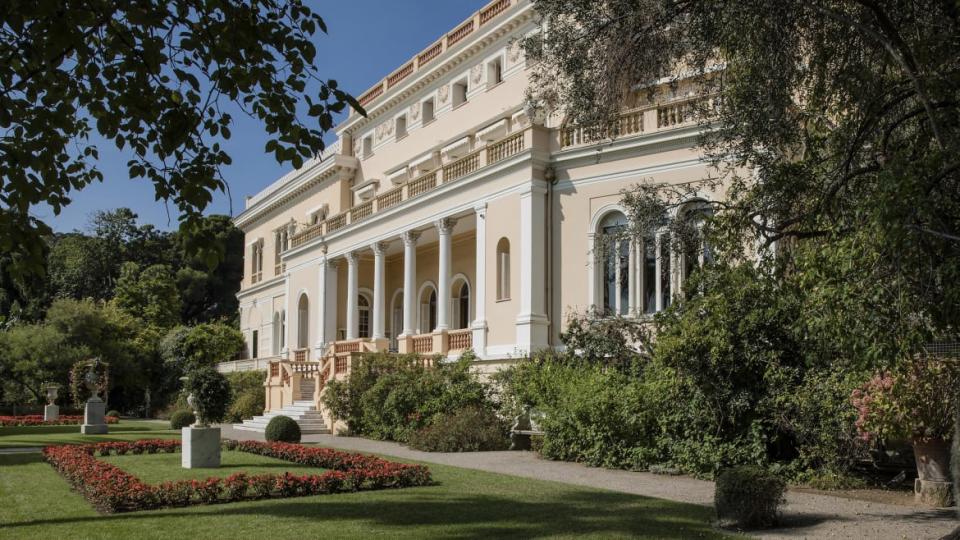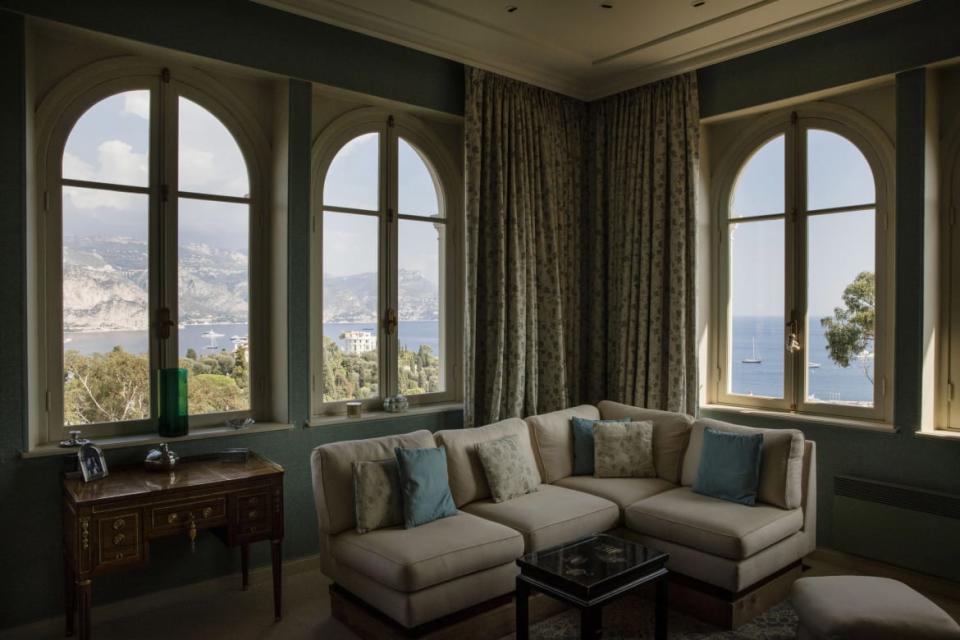French Riviera Mansion Built on Mass Murder Sells for $220 Million

Saint-Jean-Cap-Ferrat, FRANCE—Villa Les Cèdres, which sold last week for $220 million, is perhaps the most opulent villa on one of the most expensive slices of real estate on the planet. But it comes with a sinister past.
A cream-colored, 18,000-square-foot, 14-bedroom mansion built in 1830 , Villa Les Cèdres is perched on 35 acres of manicured lawns and private gardens with thousands of exotic plants. It lies on the western shore of this rocky, wooded peninsula nestled between Nice and Monaco where the Maritime Alps plunge into the sea.
The buyer, for now, remains a mystery. However, during the Belle Époque, Villa Les Cèdres was once home to one of the world’s most murderous colonialists, King Leopold II of Belgium. A white supremacist extraordinaire, he was once dubbed “Satan and Mammon in one person.”
The ambitious king, who was also reportedly a pedophile, kick-started Europe’s so-called “Scramble for Africa” in the 1880s. He shrewdly convinced the world that his bloody and enormously lucrative land grab in the Congo that led to the murder of 10 million Africans and forced labor of countless others was for humanitarian reasons.

"Armchairs and tables stand beneath chandeliers as 19th century portraits in ornate frames adorn the walls of a sitting room inside the Villa Les Cedres, a 187-year-old, 18,000-square-foot, 14-bedroom mansion set on 35 acres, in Saint-Jean-Cap-Ferrat, France, on Tuesday, Sept. 26, 2017."
Leopold cleared a profit of about the equivalent of 1.1 billion in today’s dollars, mostly from rubber, during the 23 years he owned the Congo and oversaw the brutalization of the natives—all without stepping foot in Africa. The atrocities were unknown to the outside world for years.
“While he was living there, at Villa Les Cèdres, millions of Congolese were dying as a direct and indirect result of his forced labor system,” Adam Hochschild, author of King Leopold’s Ghost, a riveting account of the Leopold’s brutal reign, told The Daily Beast.
“Even though his private ownership of the Congo was absolutely central to the latter part of his life, he never went there. He knew that roughly one out of three Europeans who did so during his lifetime died from tropical diseases for which there was as yet no cure (a statistic he kept secret), and he had no desire to take the risk—or to see the conditions under which his great fortune was made.”
Locals—and they have included David Niven, Oscar Wilde, Charlie Chaplin, Noel Coward, Baroness Beatrice Ephrussi de Rothschild, the Rolling Stones, Paul Allen and Andrew Lloyd Webber to name just a few—call this one-time impoverished fishing village simply Cap Ferrat.
Covered in lush vegetation, studded with pine and olive trees, with 360-degree views that include Elton John’s home at the top of Mt. Boron in Nice, the Baie des Fourmis, Eze and the Tête du Chien 1500 feet above Monaco, Cap Ferrat also offers one of the prettiest coastal trails in the world, a 3.6-mile trek around the perimeter of the peninsula,
“It’s magical, peaceful and private,” says the real estate broker Jameson Farn, owner of Experience the French Riviera, who’s lived on Cap Ferrat for four years and leases villas in the area that start at about $90,000 per night.
“I’m always in awe. The history, the intrigue, the incredible personalities who lived here in the past and live here today – I never take it for granted.”
Villa Les Cèdres’ amenities include a ballroom, stables and an Olympic-size swimming pool, along with jaw-dropping views of the Mediterranean that on a clear day extend all the way to Corsica.
The sun shines here 300 days a year. So it’s not where you expect to find traces of the man whose evil works inspired Joseph Conrad’s 1899 novella, Heart of Darkness.
But Leopold II left his mark all over Cap Ferrat. The British writer Somerset Maugham, who famously called the French Riviera a “sunny place for shady people,” moved into another of Leopold’s former properties here, the magnificent Villa La Mauresque, in 1927, almost 20 years after the king’s death.
Campari, the current owners of Villa Les Cèdres, have yet to identify the new buyer other than to say it is a private individual.

"Panorama of the Mediterranean Sea is seen from a bedroom at the Villa Les Cedres, a 187-year-old, 18,000-square-foot, 14-bedroom mansion set on 35 acres, in Saint-Jean-Cap-Ferrat, France, on Tuesday, Sept. 26, 2017. Davide Campari-Milano SpA reached a preliminary agreement to sell the historic Villa Les Cedres on the French Riviera for 200 million euros ($221 million) to an unspecified buyer for private use. The price is below the 350 million euros at which the villa was listed through the real estate agent Savills. The company didnt identify the buyer."
It’s hard to know how much the new buyer knows about the villa’s past owner—or cares. Leopold is invariably cited in glossy magazine copy about the estate but his heinous, horrifying past is rarely detailed in depth. Writers prefer to say he “exploited” mineral resources and rubber trees in the Congo and gloss over his predilection for young virgins and amputating the hands and feet of helpless African men, women and children.
Leopold had a Jeffrey Epstein-like penchant for underage, preferably virginal girls, according to King Leopold’s Ghost. His last paramour, Caroline Lacroix, whom he met and became besotted with when he was 65, was a 16-year-old Paris prostitute. She gave birth to one of their two illegitimate sons at Villa Les Cèdres.
Leopold directed his massive colony (the single largest in Africa) from his palace in Brussels and properties in France. His chief lieutenant, at least at first, was the Welsh explorer Henry Morton Stanley of “Dr. Livingstone, I presume?” fame. Stanley blithely tore through Central Africa, hacking through jungles and rainforests, smuggling in steamboats and conning African tribal chiefs out of their lands—all so his boss could carve out a massive new nation that endured from 1885 to 1908, when the Belgian government took official control of the colony.
In his book, Hochschild says Leopold once told an American reporter, “In dealing with a race composed of cannibals for thousands of years, it’s necessary to use methods which will best shake their idleness and make them realize the sanctity of their work.”
Leopold, meanwhile, told European and American powers that he was only in Africa to save the natives from the Arab slavers and bring Christianity to what Stanley dubbed the “Dark Continent.” Leopold named his colony Congo Free State, although it was anything but.
Because of British weaponry and technology, “a few thousand white men working for the king were able to dominate some twenty million Africans,” according to King Leopold’s Ghost. They turned the Congo into a massive forced labor camp, mainly involving the harvesting of wild rubber.
But they did more than dominate. Their cruelty—casually burning down villages, shooting Africans for sport, torturing them, amputating limbs, forcing them to work until they keeled over or were lashed to death was beyond sadistic. One of the weapons of choice was the chicotte.
“The chicotte was a vicious whip made out of raw, sun-dried hippopotamus hide, cut into a long sharp-edged cork-screw strip. It was applied to bare buttocks, and left permanent scars. Twenty strokes of it sent victims into unconsciousness; and a 100 or more strokes were often fatal,” Hochschild once said.
In the 1960s, witnesses who were alive at the time of the Congo atrocities testified on tape recordings about them. The following is one:
“At the end of the count, if the rubber was bad, out of a village complement of 25 men he might shoot 5, out of 30, perhaps 10; and perhaps 20 out of 50. It was dreadful persecution. He then sent the rest of the men back to the forest to collect more rubber to make up the quota . . . he forbad us to harvest the things in our own gardens so much so that our immediate forefathers did not eat manioc. He forbad us the palm nuts in our own trees, and the plantains and all the garden produce, and sugar cane. It was all kept for his soldiers and his followers…. Many fled and some were mutilated. I myself saw a man at Likange who had had both his hands cut off. Sometimes they cut them at the wrist, sometimes farther up . . . with a machete.”
The torture and murder of the Congolese was so horrifying that some visitors and missionaries, including an African-American Civil War veteran who made his way to the Congo, made heroic efforts to alert the outside world to the atrocities.
Those early reports presaged the observations of a shipping clerk in London, E.D. Morel, who noticed that a fortune in rubber was arriving from the Congo and only guns and manacles were being shipped back. Morel figured that the Africans were being forced to extract the rubber and launched an ultimately successful campaign with an Irish diplomat to expose the holocaust in Africa. Their crusade was the first mass human rights protest and is credited with the birth of humanitarianism.
But the poisonous legacy of Leopold lives on today in the DRC. The BBC’s DRC reporter Mark Dummett said that during his years based in Kinshasa, he saw sadly that Congolese soldiers have adopted Leopold’s method of chopping off hands as punishment.
“Congo’s soldiers have never moved away from the role allocated to them by Leopold—as a force to coerce, torment and rape an unarmed civilian population.”
Fortunately, Leopold is only a footnote on the Cap Ferrat where his legacy is buried in the past and where the beauty of Villa Les Cèdres lives on despite its provenance.
Get our top stories in your inbox every day. Sign up now!
Daily Beast Membership: Beast Inside goes deeper on the stories that matter to you. Learn more.
